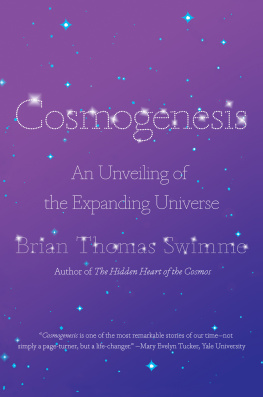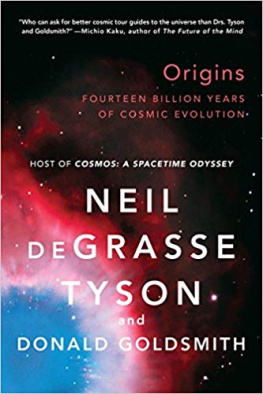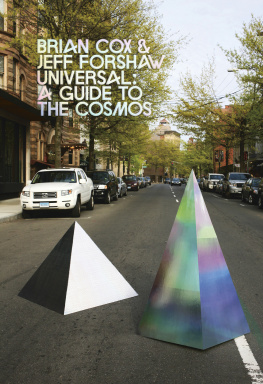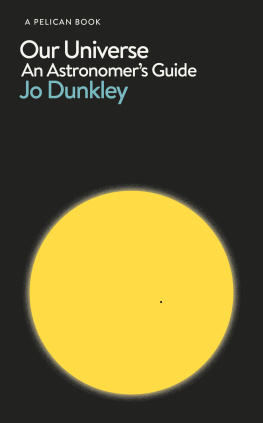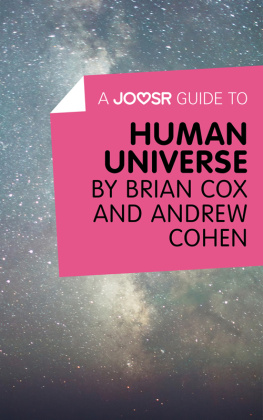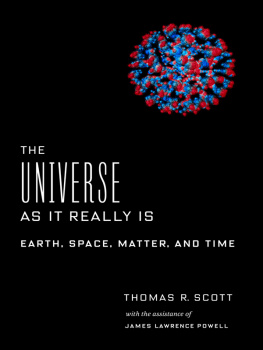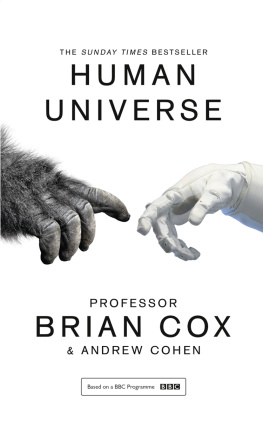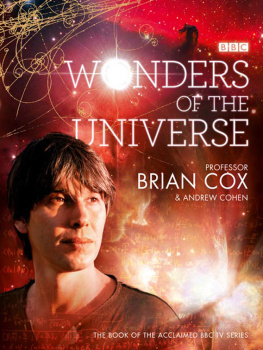Journey of the Universe
Journey of the Universe

BRIAN THOMAS SWIMME
AND
MARY EVELYN TUCKER

Copyright 2011 by Brian Thomas Swimme and Mary Evelyn Tucker. All rights reserved.
This book may not be reproduced, in whole or in part, including illustrations, in any form (beyond that copying permitted by Sections 107 and 108 of the U.S. Copyright Law and except by reviewers for the public press), without written permission from the publishers.
Yale University Press books may be purchased in quantity for educational, business, or
promotional use. For information, please e-mail sales.press@yale.edu (U.S. office)
or sales@yaleup.co.uk (U.K. office).
Designed by Mary Valencia
Set in Minion type by
Keystone Typesetting, Inc.
Printed in the United States of America by Courier.
Library of Congress Cataloging-in-Publication Data
Swimme, Brian.
Journey of the universe / Brian Thomas Swimme, Mary Evelyn Tucker.
p. cm.
Includes bibliographical references and index.
ISBN 978-0-300-17190-7 (hardback)
1. CosmologyPopular works. 2. AstronomyPopular works. 3. EvolutionPopular works.
I. Tucker, Mary Evelyn. II. Title.
QB982.s95 2011
523.1dc22
2010051084
A catalogue record for this book is available from the British Library.
This paper meets the requirements of ANSI/NISO Z39.48-1992 (Permanence of Paper).
10 9 8 7 6 5 4 3 2 1
To Nancy Klavans,
friend and fellow traveler on the journey.
With fond memories of our times together,
especially drinking tea at the Japanese garden
in Golden Gate Park.
CONTENTS
ACKNOWLEDGMENTS
A WORK SUCH AS THIS HAS BEEN A GREAT JOURNEY, and many people have shared that journey with us. We are immensely grateful to them and to all those who have inspired us along the way to create a book and a film on the Journey of the Universe. Thomas Berry was with us from the outset, giving us a sense of the great work of our time.
This great work is shared by so many of our supporters including Nancy Klavans, Marty and Wendy Kaplan, Bruce Bochte, Lavinia Currier, Susan OConnor, Diana Blank, Diane Ives, David Orr, Nancy Schaub, Jean Berry, Bokara Legendre, Peter Teague, Barbara Sargent, Barbara Cushing, Richard Rathbun, Albert Neilsen, Clare Hallward, Roger Cooke and Joan Cirillo, Edith Eddy, and, most especially, Mary Elizabeth Tucker and Jeanne Swimme.
In addition, various foundations have assisted our work on the Journey book and the film including Germeshausen Foundation, Kendeda Sustainability Fund, Compton Foundation, Englehard Foundation, Foundation for Global Community, Kalliopeia Foundation, Lewis Foundation, New Priorities Foundation, Nathan Cummings Foundation, Sacharuna Foundation, Tara Foundation, and the Tides Foundation.
To thank the readers of this manuscript is a special joy. So many of you have been such significant collaborators over the years. We are especially grateful to scientists Craig Kochel, Larry Edwards, and Terry Deacon as well as Marc Bekoff, Barb Smuts, Ann Berry Somers, Scott Sampson, Todd Duncan, Russ Genet, Michael Wysession, and Claude Bernard. Ursula Goodenoughs perceptive insights and careful readings of the manuscript were immeasurable gifts.
A deep bow of gratitude to our colleagues in the humanities for their comments: John Grim, Steven Rockefeller, Brian Brown, Miriam MacGillis, David Kennard, Anne Roberts, Rick Clugston, Marty Kaplan, Heather Eaton, Anne Marie Dalton, Chris Chapple, Margaret Brennan, Louis Herman, Neal Rogin, Kym Farmer, John Cobb, Catherine Keller, Larry Rasmussen, and John Haught. Heartfelt appreciation for conversations with colleagues at the California Institute of Integral Studies, especially Robert McDermott, Rick Tarnas, Sean Kelly, Elizabeth Allison, Eric Weiss, Jacob Sherman, and Aaron Weiss, all of whom gave important feedback during a memorable afternoon symposium.
Thanks to the extraordinary nature writers Kathleen Dean Moore, Scott Russell Sanders, and Alison Hawthorne Deming for their astute reading. Gus Speth appreciated this enterprise in ways we could not have foreseen. Gratitude abounds!
Special mention must be made of the invaluable assistance of Arthur Fabel with the bibliography. His extensive knowledge of this literature has been honed for over thirty years. Cynthia Brown also made helpful suggestions. Our webmasters Elizabeth McAnally and Sam Mickey provided a brief annotated bibliography for our website.
At Yale the Dean of the School of Forestry and Environmental Studies, Sir Peter Crane, has been unflagging in his support. At Yale University Press we have benefited from the careful editing of Jeff Schier. We are also indebted to the readers reports from Tom Lovejoy, George Fisher, David Orr, and J. Baird Callicott. Without Tara Trapanis painstaking preparation of the manuscript we would never have met our deadline. She has been remarkable.
Special thanks are reserved for Yale University Presss science editor, Jean Thomson Black. Her skillful attention to every detail of the process is indicative of why she has overseen so many remarkable science books at Yale for some twenty years. Jean understood this book from the outset and shared our admiration for the writings of Loren Eiseley, who skillfully blended the sciences and humanities.
Finally it is to our partners, John Grim and Denise Swimme, that we extend heartfelt gratitude. Your smiles are what sustain the journey.
Journey of the Universe
ONE
Beginning of the Universe

Imagine experiencing Earths beauty for the first timeits birds, fish, mountains, and waterfalls. Imagine, too, the vastness of Earths home, the universe, with its numerous galaxies, stars, and planets. Surrounded by such magnificence, we can ask ourselves a simple question: Can we find a way to sink deeply into these immensities? And if we can, will this enable humans to participate in the flourishing of life?
This book is an invitation to a journey into grandeura journey into grandeur that no previous generation could have fully imagined.
We are the first generation to learn the comprehensive scientific dimensions of the universe story. We know that the observable universe emerged 13.7 billion years ago, and we now live on a planet orbiting our Sun, one of the trillions of stars in one of the billions of galaxies in an unfolding universe that is profoundly creative and interconnected. With our empirical observations expanded by modern science, we are now realizing that our universe is a single immense energy event that began as a tiny speck that has unfolded over time to become galaxies and stars, palms and pelicans, the music of Bach, and each of us alive today. The great discovery of contemporary science is that the universe is not simply a place, but a storya story in which we are immersed, to which we belong, and out of which we arose.
This story has the power to awaken us more deeply to who we are. For just as the Milky Way is the universe in the form of a galaxy, and an orchid is the universe in the form of a flower, we are the universe in the form of a human. And every time we are drawn to look up into the night sky and reflect on the awesome beauty of the universe, we are actually the universe reflecting on itself.
And this changes everything.
STORY
Every culture organizes itself with its central stories, in both written and oral forms. Such stories contain that which each culture holds as most valuable, most useful, most essential, and most beautiful. They are regarded as containing compelling orientations toward the most enduring human challenges. Some of these stories have been so deeply valued they have been told over and over by many generations. Homers
Next page

